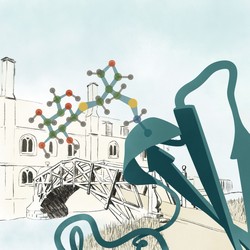Cytokine-based drugs for cancer
Chemotherapy and radiotherapy constitute the golden standard of cancer treatment but are associated with adverse side-effects. Accumulating evidence indicates that the concomitant administration of targeted radionuclides, cytotoxic drugs and proinflammatory cytokines into malignant tissue can improve patient outcome. Although monoclonal antibodies have so far been the vehicle of choice, small-molecule ligands have the capacity to achieve better targeting with more efficient tumour penetration. The EU-funded SMCCCTHER (Small molecule cytokine conjugates for cancer treatment) project proposed to develop non-internalising ligands for the targeted delivery of cytokines into somatostatin receptor-overexpressing tumours. Towards this goal, scientists generated a general chemical approach for building safe small-molecule cytokine conjugates. In this context, they stabilised the disulphide bonds present somatostatin as well as its truncated pharmacological mimic. The conformation of the stapled, stabilised analogues was evaluated in silico by molecular dynamic simulations. Overall, the disulphide bond stabilisation improved peptide binding as demonstrated for a selection of biologically relevant cyclic peptides. The potential of this disulphide modification to modulate the stability and biological activity of therapeutic proteins and antibodies was further illustrated by the improved stability and binding capacity of an HER2 antibody (Herceptin). Scientists investigated other modifications of disulphide moieties for the conjugation of small molecules as exemplified by the preparation of protein-drug conjugates using bortezomib. Further protein modifications were exploited for the targeted imaging or delivery of cytotoxic drugs to cells. Collectively, the SMCCCTHER chemical methodology showed its potential in the development of cancer-targeting ligands with improved stability and activity. Long-term, these ligands could be used to deliver certain drugs or even pro-inflammatory cytokines to the tumour site.







